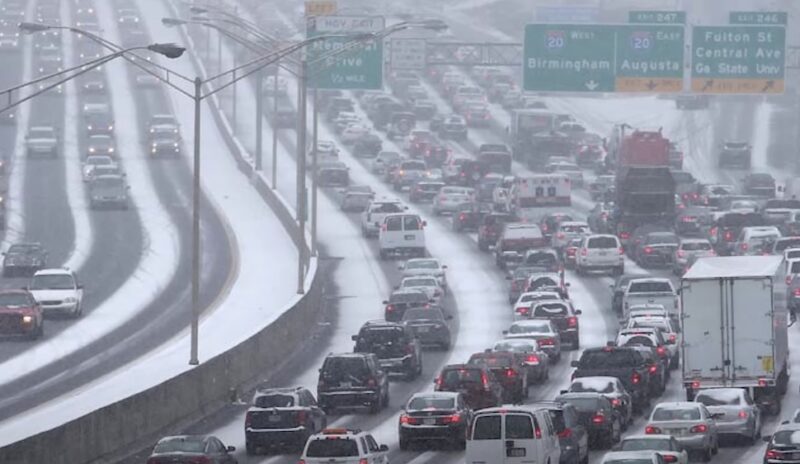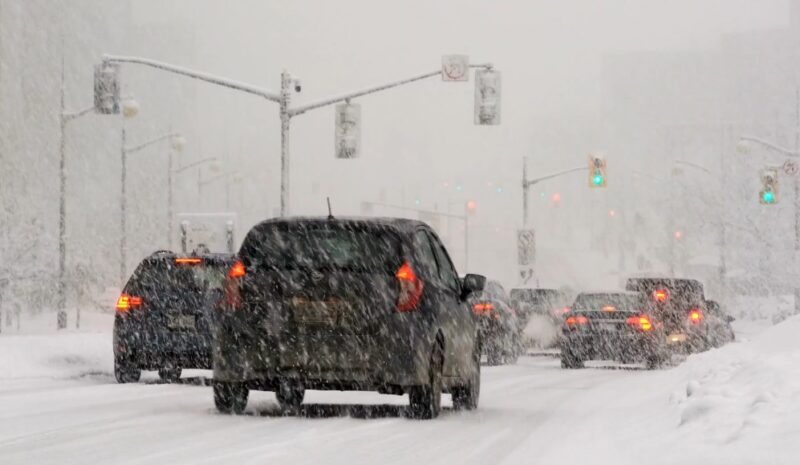As first responders like to point out, all emergencies are local. State and city governments are still our first line of defense.
Making real-time emergency decisions is not a trivial responsibility for local governments, as the State of Georgia and City of Atlanta discovered recently during the Great Southern Ice Storm of 2014. Their experience ought to be a wake-up call for state and local governments everywhere.
What happened in Georgia is that local officials got blindsided by an emergency for which they were seriously ill-prepared (in their case, a rare ice storm). Citizens in the region, consequently, were not properly alerted to the dangers of a serious advancing storm—leading to massive delays on local streets and highways.
Every region has such emergency “soft spots”—different from city to city. Minneapolis is no doubt well prepared for the next huge snowstorm, but is it ready to manage a three-week power outage?

All local governments—and especially their first responders and emergency management personnel—face major challenges when dealing with “black swan” events such as ice storms in the South, terrorist bombs at marathons, random shootings in schools and cyber attacks just about anywhere. No city or state has the resources to adequately protect their citizens against all possible hazards in our modern, 21st century threat environment.
Consequently, states and cities need our help. They need our political support for increased public safety and emergency response capabilities; and they need us to self-manage our emergency preparedness and response, as best we can. One thing that can help ordinary citizens do that is to receive better, more timely emergency situation awareness from local government.
Frankly, most cities and states urgently need better situational awareness and intelligence services for a variety of purposes. Virtually every major multinational corporation has systems that provide its security and emergency personnel with in-depth, real-time threat awareness, 7×24, from around the globe. Few if any local governments have anything comparable.
Hundreds of sources of information are now available to support better, faster and more informed decision-making in crises. NOAA, CDC, FEMA, USGS, DHS and many other federal government agencies provide steady streams of alerts which can be aggregated, filtered and distributed. These information sources can also be combined with Twitter and other social media feeds; with networked surveillance video services; with GPS asset-tracking services; and many other new information sources to produce a comprehensive view of developing threats and breaking incidents.
Another opportunity is to better leverage the information states and cities already have. A prime example is 9-1-1 data. As Carl Simpson, Director of 9-1-1 Emergency Communications for the City and County of Denver, puts it, “9-1-1 CAD systems, potentially, are a rich big data resource for cities—and especially for first responders. 9-1-1 systems capture the heartbeat of the city. Our 9-1-1 data can quickly reveal important patterns, and when combined with other information sources, can help our first responders not only stay on top of breaking events, but anticipate them.”
Capturing real-time information feeds, and fusing and filtering them effectively, can help state and local governments provide faster, better alerting to the general public when a threat is growing or actual emergency is underway. But public-facing information services are only half of the battle. The other part is making sure that police, fire and medical responders, emergency managers, and political leaders have all the real-time information they need to do their jobs. And have access to services that provide this information in ways that are practical, and actionable.

In other words, we need to use all IT means at our disposal to give citizens and their local government public servants much more efficient pictures both of emerging threats and breaking incidents. We need to supply governors and mayors, first responders, emergency personnel, school administrators and average citizens with new information services that can help them all make smarter, faster, better decisions…before, during and after emergencies. Our military personnel would not think of entering a battle zone without the best possible situation awareness; neither should our local first responders.
Deploying cutting-edge information services on behalf of both citizens and first responders is not an easy task for most local governments. One way cities can get access to such services, relatively quickly and inexpensively, is to partner with local companies who already have them. In my experience, nearly all would be quite interested in a direct public safety/emergency management relationship with local government—and the security intelligence services vendors who supply such services would no doubt be supportive as well.
New technology-focused public-private partnerships can also help local governments deploy more collaborative, social emergency communication services to keep the public better informed—with local governments providing leadership, and technology partners playing a large contributing role.
As I write this piece (in early March, 2014) odds are good that another Sandy Hook, or Sandy storm, or something else altogether unanticipated, will strike local governments in America within the next several months. Local government jurisdictions will scramble to respond. When they do, the more information they have, and the more private sector and citizen partners they have, the better.
Can public-private partnerships ramp up quickly enough to meet accelerating 21st century threats? Can they give us all a “Common Operating Picture” (to use a military term) that will help us—citizens, leaders, private companies and first responders alike—make smarter, faster, better emergency decisions? In the wake of tragic school shootings, huge data breeches, unprecedented severe weather events and other black swan emergencies, I certainly hope so.

